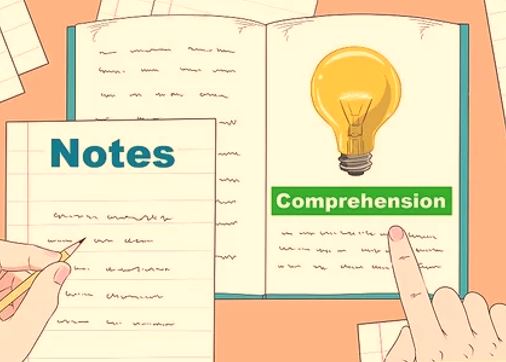Subjective Comprehension-XI
Please study carefully the comprehension given below. The passages is followed by a set of questions choose the best answer to each question.
Another kind of physiological adaptation which the animals adopt to escape life's difficulties is by sleeping through them. All birds and mammals which are considered to be warm blooded have built-in regulators to keep their body temperatures at or near a normal operating level. In man these devices are very precise and except in abnormal situations such as illness and strenuous exercise, we live our lives at a body temperature between 36.6° and 37.2° centigrade. But in wild animals there is a great deal of more variation, and some, whose body temperatures can fall far below normal are even able to enter coma-like state known as dormancy. If food supply is short, an animal can conserve energy and live much longer by lowering body temperature and thereby lowering die rate at which food stores are metabolized or consumed since it takes fuel to keep the body furnace going. This is particularly true of very small animals.
Let us take the example of a very small desert rodent, the pocket mouse. It is called pocket mouse because of the seed-carrying pouches in its cheeks. It is a smaller edition of the Kangaroo rat. It stores seeds in its burrow, get both food and water from them, it has absolutely no need to supplement the diet with "green water" from vegetation. In times of extreme heat and drought, or during periods of severe winter cold, the mouse falls into a deep sleep, and its body I temperature is slightly above that of the burrow. In summer the ground is fairly warm, so sleep is not so profound as in winter.
The dormancy in the pocket mouse can be induced experimentally also by withholding food. If the torpid mouse is kept at a temperature of about 16°C it may drowse for days, stirring only for short periods. If the temperature is dropped to near freezing, the mouse can be put into deep hibernation with a body temperature as low as 6°C. At this point breathing almost stops and the "burning" of food in the body approaches zero. What little energy is consumed comes from fat deposits in the body. This is the state in which pocket mice and other hibernators spend the cold winter months. Warm weather revives them, and when fully awake they emerge as good as new.
Ques 1. Why is small desert rodent called the pocket mouse?
Ques 2. How can dormancy be induced in the pocket mouse experimentally?
Ques 3. How does the pocket mouse feel when it revives after remaining in a coma-like state for a long period?
Ques 4. Say, why an animal, especially a small one, goes into dormancy?
Ques 5. What happens to an animal in dormancy?
Solution :
Ans 1. A small desert rodent is called the pocket mouse because it carries seeds in the pouches in its cheeks.
Ans 2. Dormancy in the pocket mouse can be induced by stopping food. If the torpid mouse is kept at a temperature of about 16°C, it may drowse for days. At a temperature as low as 6°C it can be put into deep hibernation.
Ans 3. The pocket mouse emerges as fresh as young one when warm weather revives it.
Ans 4. A small animal, like desert rodent goes into dormancy in times of extreme heat and severe winter cold. It goes into dormancy for the sake of physiological adaptation to escape abnormal temperature.
Ans 5. Wild animals whose body temperatures can fall far below normal are able to enter the state of dormancy. It is a coma like state. An animal can preserve energy and live longer by lowering body temperature.
